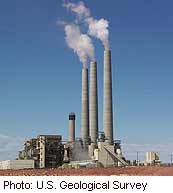
TUESDAY, March 8 (HealthDay News) — Coal-fired power plants emit a wide-range of unregulated pollutants that pose a threat to public health, warns a report released Tuesday by the American Lung Association.
The document comes out one week before the U.S. Environmental Protection Agency’s deadline to present a proposal for cleaning up the toxic pollution from coal-fired power plants.
According to the report, coal-fired power plants produce more hazardous air pollution in the United States than any other industrial pollution sources. More than 400 coal-fired power plants in 46 states release in excess of 386,000 tons of hazardous air pollutants into the atmosphere each year, it says.
No national standards are in place to limit such pollutants as toxic metals and metal-like substances like arsenic and lead; mercury; dioxins; acid gases like hydrogen chloride; and chemicals known or believed to cause cancer, such as formaldehyde, benzene and radioisotopes, the report notes.
But the EPA has a court-imposed deadline of March 16 to issue a plan to alleviate this toxic pollution from coal-fired power plants.
“It’s time that we end the ‘toxic loophole’ that has allowed coal-burning power plants to operate without any federal limits on emissions of mercury, arsenic, dioxin, acid gases such as hydrogen chloride and other dangerous pollutants,” Charles D. Connor, president and CEO of the American Lung Association, said in an association news release. “The American public has waited long enough — more than two decades. We are counting on EPA to protect all Americans from the health risks imposed by these dangerous pollutants once and for all.”
“People living closest to these plants, especially children, seniors and those with chronic disease, face the greatest risk, but it doesn’t stop there,” Connor noted. “Pollution from coal-fired power plants takes flight and travels far into other states, threatening public health.”
Most coal-fired power plants are in the Midwest and Southeast.
The report also listed pollution control technologies already used in some coal-fired power plants that are readily available for installation at other plants to reduce toxic emissions.
More information
The Union of Concerned Scientists has more about coal burning.

